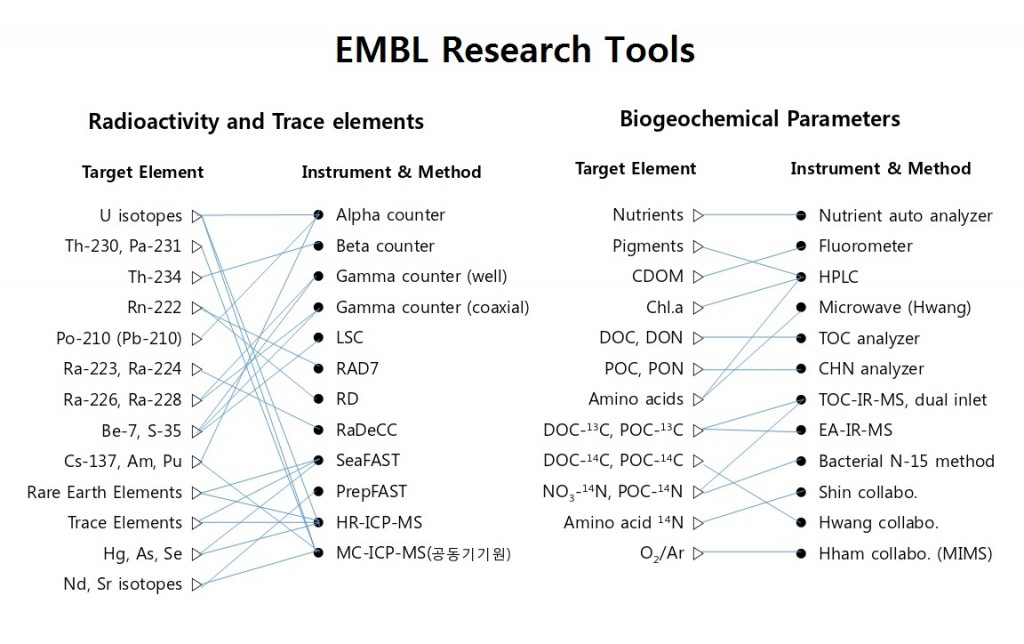

– Development of analytical techniques of all natural, artificial, and cosmogenic radioisotopes
– Behaviors of radionuclides in the atmosphere, lakes, sediments, and ocean
– Particle and organic matter scavenging and cycling: Th-234, Po-210, Pb-210
– Water and air mass mixing and exchange: Ra and Rn
– Magnitude of mechanisms of submarine groundwater discharge: Rn and Ra
– Bioaccumulation and bio-volatilization: Po-210
– Atmospheric deposition and sedimentation rates: Be-7, Pb-210, Cs-137, Bi-210
– Artificial Cs-137 and Sr-90 in the ocean
– Fluxes of macro- and micro-nutrients through rivers, groundwater, and atmosphere
– Behavior of C, N, P in estuaries and subterranean estuaries
– Consequences of coastal fluxes in the ocean: biological production, red tides, biogeochemistry
– POC, DOC, CDOM, DON, THAA, nutrients: sources, transport, cycling
– Groundwater dependent ecosystem: magnitude and linking mechanisms
– Sources and ages of refractory DOM
– Stable C and N isotopes as tracers
– Coastal acidification: impact of changes in coastal fluxes
– Fluxes of trace elements and REE through rivers, groundwater, glacier, and atmosphere to the ocean
– Behaviors of trace elements in estuaries and subterranean estuaries
– Consequences of trace fluxes in the ocean
– Cycling of trace elements in lakes and oceans
– Stable isotope systematics: Pb, Sr, Nd
– Se and Te bioaccumulation


